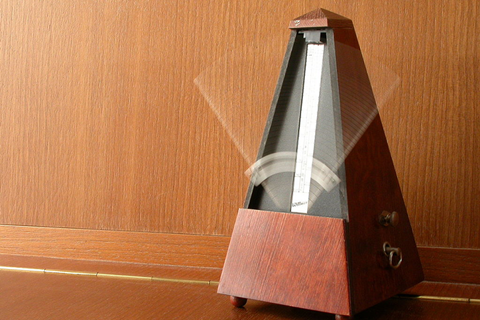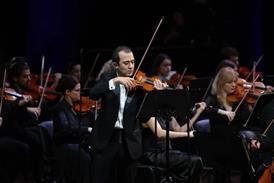Brian Hodges answers student questions on coping with stage fright

The dilemma: What is the best way to start a piece on stage? I find that I’m so nervous in performance that I usually take my tempo faster than I want to take it and I don’t play as well as I’d like.
What happens to our brains and thus, our perception on stage is a fascinating phenomenon. We can practice as slowly as we’d like in the practice room, feeling confident and in control, and the second we put bow to string in a performance situation, all that can go out the window.
It’s important to understand that you do have control over how your tempo is set and how you feel on stage. Even though your heart may be racing like a jackrabbit, it is possible find a place to be centered and start off on the correct foot, having positive implications for the rest of the performance.
The first step is to take time before you start. Many performers, as soon as they bow and take their place on stage (standing or sitting), immediately put their bow up and play before they’re really 100% ready. There can be a perception that the audience will get impatient if the performer is taking too long to get situated, which of course is not true. It only seems like a long time to you; they will wait patiently. They want a fantastic performance and if it takes an extra minute while you collect yourself, so be it.
Once you find your place on stage, take a moment to deepen your breathing, close your eyes if you have to. Sing through the music in your head for a few bars at a tempo that feels secure and comfortable. If you really feel jittery, take the tempo slower than you had planned. Chances are, the combination of your adrenaline, nerves and excitement will make it feel faster anyway, so by taking a more deliberate tempo it will split the difference.
If there’s another player involved, discuss beforehand how you’re going to start. Build in places in the music to regroup, so to speak, if the tempo gets going too fast. If you generally start out ok, but are prone to rushing, consciously make your movements and gestures bigger. For instance: use more bow, make bigger arm movements with your left arm, whatever it takes to keep from tightening up and tiring out.
The key is to know that it is ok to take time before you start to find your internal place where you feel comfortable and in control. This may take some time to get used to in your performances, but the feeling you get when you perform from a place of strength and security is absolutely worth it.
Read: Conquering performance nerves: sweaty hands, losing bow grip
Read: Release the Fear Monster: how to conquer anxiety and perform at your best
Read: Conquering performance nerves: how do I control my fear of failure?
Read: Conquering performance nerves: how do I banish sweaty hands and nausea?
Read: Conquering performance nerves: I’m great in practice but don’t perform so well on the day
Read: Conquering performance nerves: how can I warm up my stiff, cold hands?
Read: Conquering performance nerves: how can I become more comfortable during lessons?
Read: Conquering performance nerves: how do I overcome the fear of not being good enough?
Read: Conquering performance nerves: staying focused on stage
Brian Hodges is an active soloist, chamber musician and teacher. He is associate professor of cello and coordinator of chamber music at Boise State University in Boise, Idaho. He is the principal cellist of the Boise Baroque Orchestra and performs regularly with Classical Revolution: Boise, which has been featured at the Idaho Shakespeare Festival and live on the radio at Radio Boise. He can be reached at www.brianhodgescello.com
Brian presented on the topic of performance nerves at the 2016 American String Teachers Association conference. The 2018 conference takes place from 7-10 March in Atlanta.



































No comments yet